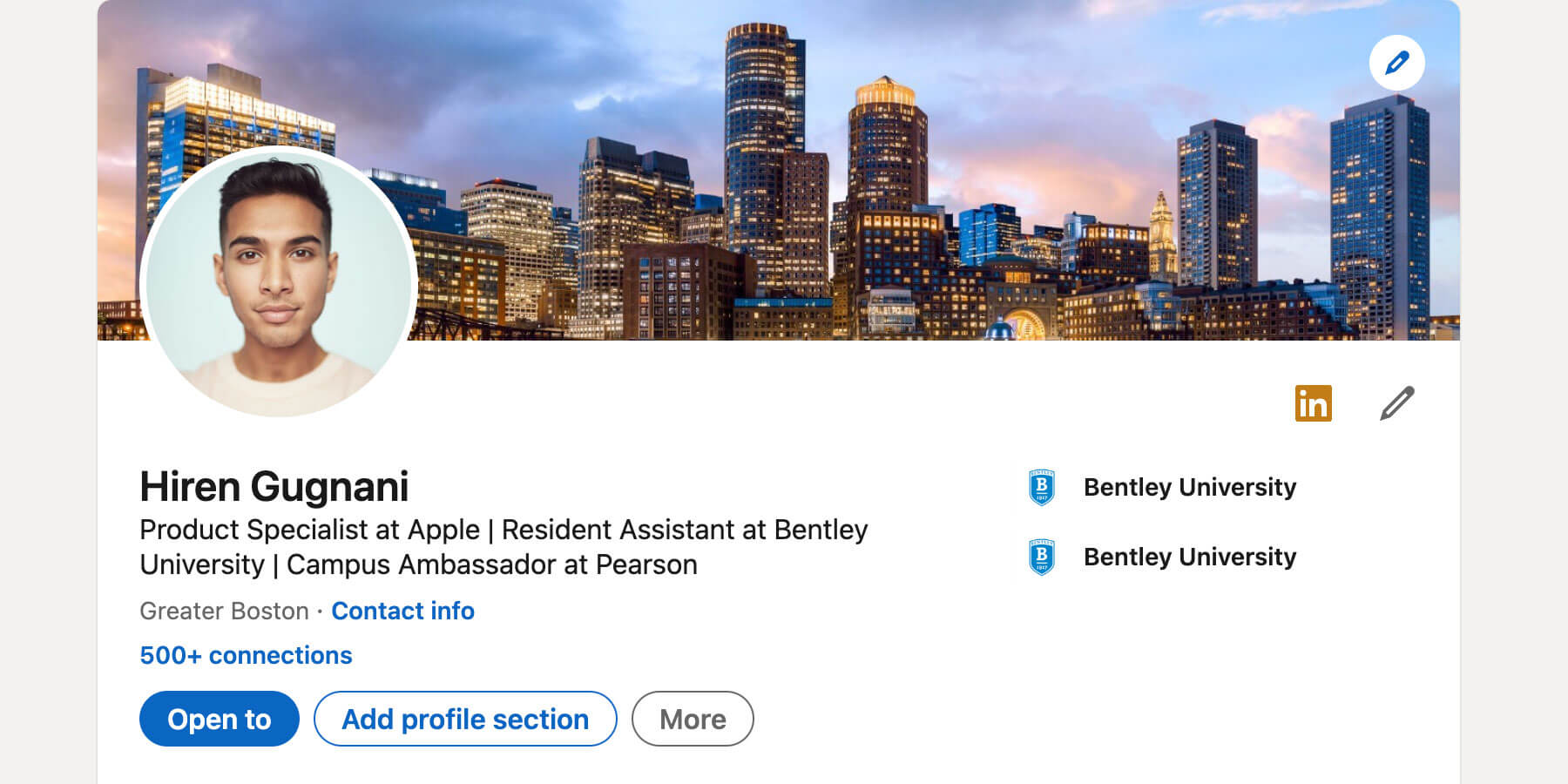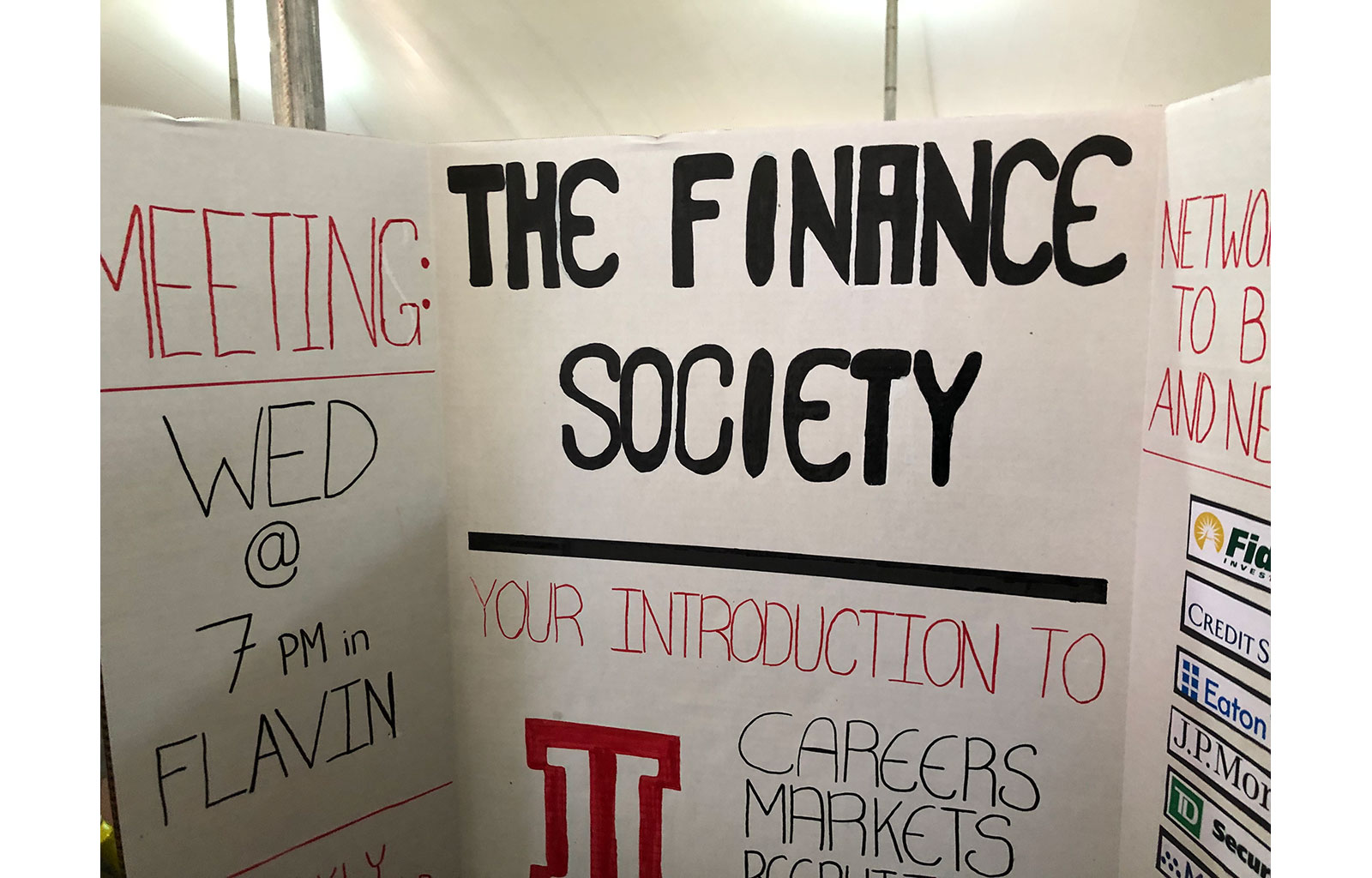
LinkedIn: Creating your account, building your profile, and everything in between
If you haven’t created your LinkedIn account, it certainly is not too late to do so! Not many realize that LinkedIn is purely beneficial to your career, and online persona; it’s a great resource to contact recruiters, alumni, and countless other people you’ve come across professionally. Whether you’re creating your LinkedIn for the first time or updating your profile, here are a few tips to best utilize this platform to your advantage!
First Impressions
First and foremost, make a few simple updates your profile by adding a profile picture, headline, and bio. Although a professional headshot is ideal, any professional-looking photo or even a picture taken of you against a neutral background taken with your cell phone camera should suffice. If you have an iPhone, simply place the camera app in “Portrait Mode” to achieve a clear and focused DIY headshot! Add a headline with your current job/degree prowess, and there’s a solid start right there!
Next, add a bio in the ‘About’ section on your profile. This does not need to be any longer than 100-200 words, but it is nice to provide an introduction into yourself. Think about it as a condensed cover letter. Make sure there is a space for additional contact as well, such as your email address. You want your profile to look good and to make the lasting impression that is easily transferable to a contact at any point in the future.
Experiences & Activity
All jobs, internships, and volunteer activities can be listed here on your profile! While it is beneficial when you list associations and institutions with their own respective LinkedIn pages, any experiences that have made an impact on you that can be spoken about has its place on your page. An easy way to update this section is to copy and paste bullets from your resume or supporting documents into the description text box. It is also possible to rephrase a summary of the experience in paragraph format. If choosing the second option, make sure to keep it brief!
Education is also important to list in your profile. Any degrees or programs completed or in progress should be listed here. Your alumni network is vast, and this shows potential connections that you both have the institution in common, which helps to instill talking points.
Make Connections!
When meeting someone in class, a networking event, a coffee chat, or any other occasion involving a potential life connection, you may as well add them as a connection on LinkedIn! There is an option to leave a note when connecting if you would like to say thank you for their time, or simply remind them when/where you interacted. For any number of connections up to 499, the exact number is publicly listed on your profile. Once the threshold of 500 connections is made, then it is shown as “500+”. For that reason, it is not necessary to spend time connecting with numerous individuals. Once you get connected with your high school or college class, there will be hundreds already established within your network. Once connected, one’s profile is a “1st” connection when you are signed in.
It is also doable to reach out to secondary connections! When someone is one degree of separation from your profile on LinkedIn, they show up for you (and vice versa) as “2nd”, and any more degrees of separation away is “3+”. In this case, a 2nd connection can be made into a 1st connection when your mutual puts you two together, or by personally reaching out to the 2nd connection due to a dedicated interest.
Is LinkedIn Premium Worth the Cost?
Premium has a heavy cost to it, and thankfully this can be accessed via a free trial for each account. There are a few bonuses that come with this subscription, and from personal experience utilizing the free trial, I find it can be quite helpful when actively searching for a job or internship, but not necessarily year-round.
There is a yellow badge that appears next to your name on your profile to notify others of your premium access. Those with Premium can see who specifically is viewing their profile and receive metrics based on viewers. Up to five “InMail” credits are given, which allow for direct messaging to recruiters! This can be especially helpful when applying for sought after roles to place yourself above the standard application process.
All in all, I would say it is definitely worth taking advantage of the free trial when it will be useful for you to do so. From there, it is up to you to figure out when to continue having LinkedIn premium. Just make sure to turn off auto-renewal when you begin your trial!
LinkedIn is the top networking and job searching site. It’s free set up make it easy to make connections and get noticed by potential future employers. Try these tips and you’ll get your LinkedIn profile in top shape in no time!
Do you have a compelling story or student success tips you’d like to see published on the Pearson Students blog? If you are a college student and interested in writing for us – click here to pitch your idea and get started!
